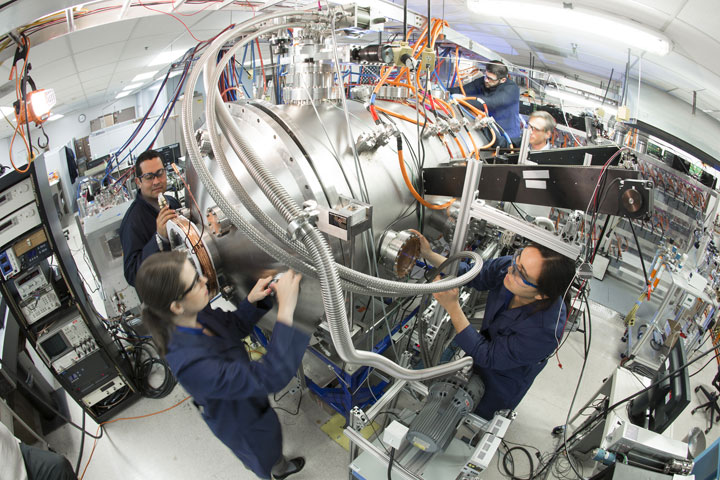Watch the video above: Lockheed Martin explains its development of a compact nuclear fusion reactor.

TORONTO – Limitless energy. It’s the stuff of science fiction. Except, according to one aerospace and advanced tech company, it’s one step closer to becoming a reality.
On Wednesday, Lockheed Martin announced that its Skunk Works team, which had been working on developing compact nuclear fusion, could produce a prototype within a year.
READ MORE: Apple focuses on renewable energy, product recycling programs
What does that mean for you? It is limitless, clean energy that could one day fuel transportation vehicles such as planes.
“Looking down the road, we need energy solutions for the future,” Tom McGuire, compact fusion lead for the Skunk Works’ Revolutionary Technology Programs told Global News. “We need more energy for the developing world, we need cleaner energy.”
There are two ways of producing nuclear energy: through fission — such as is used in nuclear power plants and nuclear-powered submarines — or fusion.
Fission is a process where a heavy nucleus is separated; fusion is the opposite where similar nuclei are brought together to produce energy. In fact, it’s the same process that fuels our sun.

Get breaking National news
In fusion, a heavy gas — such as deuterium — is heated to the point where it separates into ions and electrons. The ions super-heat — to hundreds of millions of degrees — and join, rather than separate. By doing that, an enormous amount of energy is created.
Though nuclear fusion has been understood for more than 60 years, being able to create the reaction and control it has been a challenge for scientists. One such challenge is efficiency.
“It costs a lot of energy to heat the gas at a high enough temperature,” said Jean Barrette, a retired physics professor from McGill University. “So you have to produce enough nuclear fusion to produce more energy than you have used. And that’s always a problem.”
Another challenge is keeping the plasma together.
“And it’s very difficult to do that,” Barrette said.
But McGuire told Global News that their design makes that possible.
“The novel part of our concept is that we think we have a way to make the plasma stable, and an order of magnitude more dense, smaller. And that really comes from being to be able to make better use of the magnetic field,” said McGuire.
The magnetic chamber seems to be the key to making this reactor. As the plasma — the leftover ions and electrons — is formed, the chamber keeps the plasma from touching using strong magnetic fields. Instead of wanting to repel, they are drawn together and fuse. The neutrons generated by that process pass through the magnetic field, hitting the wall and depositing their energy as heat which in turn drives turbines.
There are already companies around the world that are working on nuclear fusion projects, including ITER, which is under construction in France. It plans to use 50 megawatts of energy input to output 500 megawatts.
In Canada, General Fusion, located in British Columbia, is also working on its own fusion concept.
Skunk Works’ concept will be a 100 metre by 7 metre reactor that will generate 100 megawatts (MW) of energy. That, they say, can power 80,000 homes. It would also be compact enough to power ships, or even power a large airplane, allowing it unlimited range. In one year, a 100 MW system would burn less than 20 kg of fuel, and would provide cheaper electricity.
And yes, there will be some radioactive waste, though it would be less than what nuclear power plants produce.
READ MORE: Japanese governor says too soon to restart nuclear plants
The smaller design also means that they can design it and construct it quickly. But don’t expect it for your car just yet, McGuire said: it’s easier to go bigger than it is to go smaller.
As for cost, McGuire said that it would be very “cost competitive” similar to coal, but with a much cleaner profile.
So far, Lockheed Martin has conducted preliminary tests. They’ve built the T-4 reactor, and acquired some preliminary data. They will conduct its full suite of diagnostics and expect to publish the results later this year.
“So we’re not making power yet; that’s a few steps down the road.”









Comments